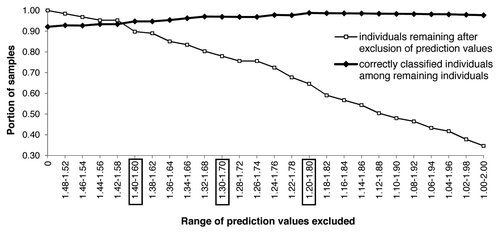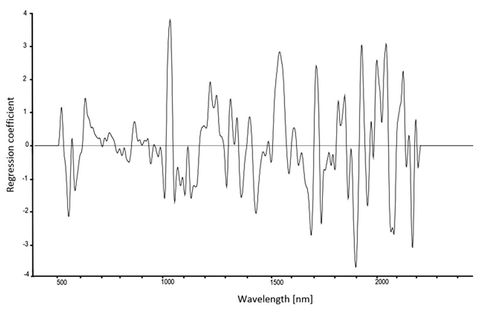Figures & data
Table 1. Classification results of Drosophila subobscura and D. obscura based on PLS regression models developed from near-infrared spectra (500–2200 nm).
Figure 1. The portion of correctly classified specimens depends on the exclusion of spectra with ambiguous prediction values, exemplified by the F8 females. The thin line shows the increasing loss of individuals with increasing range of excluded prediction values, the bold line shows the corresponding increase in correct classification. Exclusion ranges in boxes are discussed in the text.

Figure 2. PLS regression coefficient used for identifying important wavelengths for classification of Drosophila subobscura and D. obscura females from the F8.
